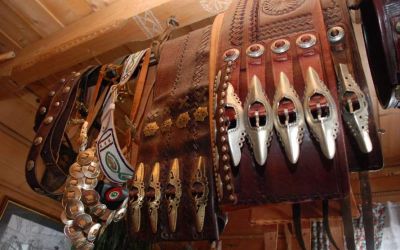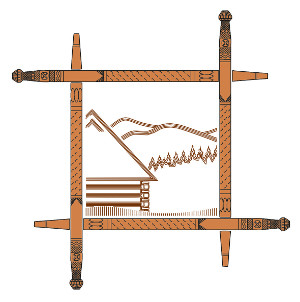
Bacowski belt - made of thick leather, folded in half, 20-30 cm wide, studded, decorated with die-cut ornament and metal bumps and fastened with brass buckles (from three to five). In the old days it served as a purse for quills, testified to wealth, added prestige, but was also a kind of armor protecting against impact in combat (for example, in a wedding fight with the use of ciupagi). The belt was also needed during heavy field work, e.g. logging, felling, as it protected against hernia. Special belts for shepherds were made only by some shoemakers, who could give them magical power. On the day of the Mother of God of the Rosary (October 7), such a craftsman went to Vespers and after work returned to work. It had to be spread over three or nine days. Some of them sewed in a strip of paper with a fragment of the Gospel of St. John with a spruce (and even better yew) splinter, and even with crumbs of the host.
Gazdowski belt - 7-10 cm wide belt worn by middle-aged men as a decoration for pants, fastened with metal hooks.
Juhaski Belt - a narrow belt decorated with a row of metal bumps, used to support the trousers, released at the back on the buttocks. In Małopolska, the bacowski, gazdowski and juhaski belts are practically the same everywhere. Very widespread and often worn by highlanders (very good condition of tradition). The differences that may occur in the appearance of the belts are related to the decorative details depending on the skills of the contractor or the taste of the customer. The technique, shape, size, etc. are, however, unchanged for centuries. This unique item of clothing is only slightly modified, which means that belts worn today by shepherds and other highlanders are almost identical to those of the nineteenth century, which we know from ethnographic studies, paintings and the oldest photographs.














